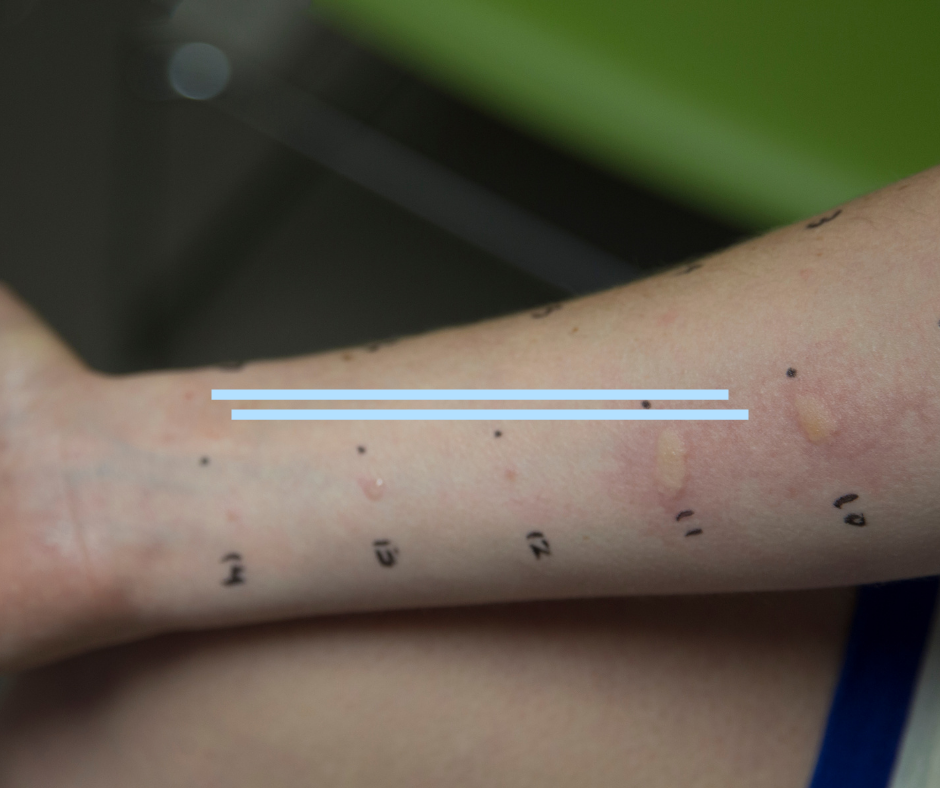Have you had allergies but do not know what’s causing them?
It’s a bother, and not just because it causes symptoms like a runny nose or itchy eyes /throat, but because it affects the daily life of millions of people every day.
So you are not alone! Most of us have had allergies at one point or another but the sad thing about it is it seems to never go away.
Allergies affect more than 50 million Americans every year. (1) The case fatality of allergies is at 0.63 to 0.76 per million population or roughly 186 to 225 deaths per year. (2)
That’s all scary numbers, and people have reason to be scared because when you are allergic, you know that it changes a lot of things in your life and a lot of adjustments are often made.
Table of Contents
When we say allergies what does it mean?
Allergy is a broad term that umbrellas into asthma, allergic rhinitis, anaphylaxis, urticaria, angioedema, allergic dermatitis, and eczema.
Allergies are chronic abnormal reactions produced by the body’s immune system when exposed to an allergen mediated by immunoglobulin type E antibodies.
And yes, there are hereditary conditions with a heritability estimate of 95% for asthma, 91% for allergic rhinitis, and 84% of atopic dermatitis. (3)
That means that there’s a big chance of inheriting allergies from a parent or passing them on to your child.
With allergies, different agents could trigger different allergic reactions.
Pollen, food, temperature, insect bites, dust mites, molds, medications, latex, and other substances could trigger allergies.
What are these allergens and how can you avoid it?
Let’s go through the more common allergens one by one since people can have 2 or more things that they are allergic to…
Animal Dander

The shedding of your pets, especially cats and dogs can cause allergy problems the whole year-round.
The allergic reaction that you experience is from the proteins that are in the saliva, urine, or skin cells of cats and dogs.
Signs of animal dander allergy are sneezing and a runny nose. Some people even experience signs and symptoms of asthma exacerbation like wheezing and difficulty breathing.
The dead flakes of skin or fur that cats and dogs may shed and can easily be inhaled and cause these signs and symptoms. Any animal with fur can cause allergy but it is often seen in cats and dogs probably because they are the most common indoor pets that we have.
How can you avoid animal dander?
- Keep pets away from your bedroom.
- Keep pets away from rooms with carpeted flooring— animal dander is difficult to remove on carpeted rooms and may cause recurrent symptoms of allergies.
- Keep pets away from areas with upholstered furniture. Animal dander can stick to furniture and is difficult to remove.
- Wash your hands after touching or petting your cats and dogs to remove any fur that may stick to it.
- Have someone who is not allergic to clean rooms where animals have stayed. Using a vacuum with a high-efficiency particulate air (HEPA) filter or double bags can be more useful than the regular vacuum because it can remove animal dander.
- Take pets to the groomers frequently or bathe them regularly. If animal dander is from hamsters or guinea pigs, clean their cages frequently.
Dust Mites

Dust mites are microscopic and are a close relative of ticks. They eat skin cells that we shed and live in warm and humid places. They can be found anywhere in our home— upholstered furniture, carpets, and even beddings which is why people who have dust mite allergies may experience recurrence of their symptoms.
The protein found in their droppings can also cause problems for the whole year.
How can you avoid dust mites at home?
-
- Wash your beddings and curtains weekly with hot water to kill dust mites and remove any other sources of allergens.
- Remove carpets or any other furniture in the house that may cause dust mites to settle in. Carpets can be replaced with tiles, linoleum, or vinyl flooring.
- Buy allergen-proof beddings. There are a lot of these items available on the market. Buy covers made from a tightly woven fabric that prevents dust mites from colonizing your beddings.
- Keep the humidity low at home with the use of a dehumidifier or air conditioner.
- Remove dust on the floor by using a damp mop or rag to prevent dust from becoming airborne. Do not forget to clean areas like
- Vacuum carpets or upholstered furniture regularly. Use a vacuum cleaner with a HEPA filter just like those for animal dander to help remove dust mites since a regular vacuum cannot remove dust mites efficiently.
Trees, Grass, and Weeds

Trees can have pollen and when airborne, can travel up to 50 miles. Patients who have allergies to trees, grass and weeds are often vulnerable to allergies when living in an area surrounding trees and grass or when outside for activities like camping or hiking.
This can be very bothersome but you can minimize exposure to decrease your allergy exacerbation. Here is what you can do:
- Wear a mask when going outdoors especially in areas where trees like sycamore, pecan, oak, birch, cedar, cottonwood, box elder, red maple, ash, and queen palm trees are since these can be very irritating. Masks can be constricting especially when you’re doing a physical activity but they will filter pollen.
- Keep your windows closed on windy days when the pollen of trees can be abundant in the air.
- Wash up as soon as you come home from being outdoors to avoid bringing in pollen inside your home.
Mold

Molds are fungi that have spores that can travel in the air especially when the weather is windy or when the humidity is high. The spores of molds cause allergic reactions in a lot of people with allergies and since they can grow both indoors and outdoors, mold allergy also happens the whole year-round.
Here are some valuable tips that can help you with your mold allergies:
- Wear a mask over your nose and mouth when working outdoors like mowing the lawn or working around compost to avoid spores from going in.
- Close your windows at night when you are sleeping. Spores tend to be at a higher concentration at night because the weather is damp and cooler.
- Don’t go outdoors when the weather is damp or cold or when the humidity is high.
- Clean areas where molds may form like near your heater or air conditioner exhaust.
There are numerous allergens than what is mentioned above and there are a lot of ways that you can avoid them— but it would be hard to avoid these allergens if you do not know what you are allergic to, this is why allergy testing is important.
Now, let’s move on to what’s significant: knowing what’s the cause of your allergy.
To know more about it, we need to understand the tests that are done for allergy testing. Your doctor can perform either a blood test or an allergy skin test.
Allergy skin testing is further divided into a skin prick testing, intradermal testing, or an atopy patch test.
Our focus is the patch test because it is easier, faster, and safer with lesser pain and risks for patients.
Who needs patch testing?

If you have been suffering from allergic signs and symptoms but are unsure of the triggers then you need patch testing to find out which allergens are causing these symptoms.
If you are uncertain if your symptoms count as allergies here are the common things people experience when they have it:
- Sneezing
- Rhinorrhea
- Nasal obstruction
- Itching of the nose, palate, pharynx, and ears
- Itching, redness, and tearing of the eyes
- Allergic gape or continuous mouth breathing when exposed to an allergen
- Chapped lips, dental malocclusion
- Allergic shiners or dark circles under the eyes
- Coughing or wheezing when exposed to certain triggers
- Skin rash that is very itchy and red
Learn more about the full services of PremierMED today!
What is a patch test?

If you have not heard about it before, patch testing is a procedure done for diagnosing allergy through prolonged skin exposure to allergens. (19) Unlike skin prick test and intradermal testing, patch testing does not break the skin barrier instead it exposes the skin to the allergen at a longer period.
This is the number one reason why patch testing is preferred!
There are a lot of kinds of patch testing but what we use is the AllergiEnd® Allergy Testing.
It is used for patients to evaluate them for seventy different allergens. It uses no needles and results come out after 20 minutes.
How awesome is that? No wait time, less risk, and zero needles.
If you’re wondering more about how it is done, the skin is used for the AllergiEnd® Allergy Testing.
The doctor or nurse will usually try to find a large area of skin where the testing can be done. This can be in your arm, thigh, or back since these areas have wider space where they can further measure any reaction after the testing.
The test will introduce very small amounts of common allergens such as specific kinds of weeds and trees, milk allergy, dust mite, and molds.
It will be applied on the skin and within a few minutes, the doctor will reassess if there is a positive reaction. These reactions are usually in the form of swelling and redness in the area where it was introduced.
The sensitivity of the test is greater than 90%!
This simply means that the test can accurately pick up who really has the allergies.
Why choose a patch test?
Here are the advantages of getting a patch test:
- It is convenient and easily available, general practitioners can perform and interpret the test for you. No need to wait and have an allergologist read the result.
- The results are readily available after 20 minutes, no need to wait for days for your result to come!
- It is sensitive and specific to the allergens tested, meaning the likelihood of getting a false positive is low. You are sure that the allergens that you are positive in are really the ones you are allergic to.
- Patch tests are relatively inexpensive as compared to blood allergy tests.
- It has very low to almost no side effects. Intradermal and skin prick testing often run the risk of getting an allergic reaction, patch testing has very low side effects because the allergens introduced are in small amounts and are not injected into your body.
- There is no need to inject anything into the patient, this means it is easy to do especially in children or patients who have needle phobias.
- It can give you the specific type of allergy that you have and you can solve the root cause of your allergy.
- If you have been suffering from recurrent rash with an unknown cause, it is a good way to rule in or rule out allergies as the cause of your skin condition.
Conclusion
Allergies for others may be mild but for some, it is life-threatening. Proper identification of the triggers is essential for appropriate avoidance and environmental control measures.
Do not forget that allergies may present differently in every person. It may present as allergic rhinitis, atopic dermatitis, and skin eczema, urticaria and angioedema, food and drug allergies, or asthma.
Lets quickly recap what we covered in our allergy skin test article:
Table of Contents
- When we say allergies what does it mean?
- What are these allergens and how can you avoid it?
- Animal Dander
- Dust Mites
- Trees, Grass, and Weeds
- Mold
- Who needs patch testing?
- What is a patch test?
If you have allergies your whole life but do not know what specific allergens are causing it, then the patch test is perfect for you!
Research done to determine the cost and benefits of patch testing for the diagnosis of allergies as a diagnostic tool has concluded that it is indeed more cost-effective and greatly improves patients’ quality of life! (5)
Just remember that proper consultation and discussion with your doctor are needed to determine what kind of testing you need.
Allergies need not be a burden in your life. What are you waiting for?
Learn more by booking a consultation today!
—
References:
- Asthma and Allergy Foundation of America. (n.d.). Allergy facts and figures. Retrieved from https://www.aafa.org/allergy-facts/#:~:text=More%20than%2050%20million%20Americans,types%20of%20allergies%20each%20year.&text=Allergies%20are%20the%206th%20leading%20cause%20of%20chronic%20illness%20in%20the%20U.S.
- Ma, L., Danoff, T. M., & Borish, L. (2014). Case fatality and population mortality associated with anaphylaxis in the United States. The Journal of allergy and clinical immunology, 133(4), 1075–1083. https://doi.org/10.1016/j.jaci.2013.10.029
- Portelli, M. A., Hodge, E., & Sayers, I. (2015). Genetic risk factors for the development of allergic disease identified by genome-wide association. Clinical and experimental allergy : journal of the British Society for Allergy and Clinical Immunology, 45(1), 21–31. https://doi.org/10.1111/cea.12327
- Larrabee, Y. C., & Reisacher, W. (2015). Intradermal testing after negative skin prick testing for patients with high suspicion of allergy. International forum of allergy & rhinology, 5(6), 547–550. https://doi.org/10.1002/alr.21512
- Rajagopalan, R., & Anderson, R. (1997). Impact of patch testing on dermatology-specific quality of life in patients with allergic contact dermatitis. American journal of contact dermatitis : official journal of the American Contact Dermatitis Society, 8(4), 215–221.

